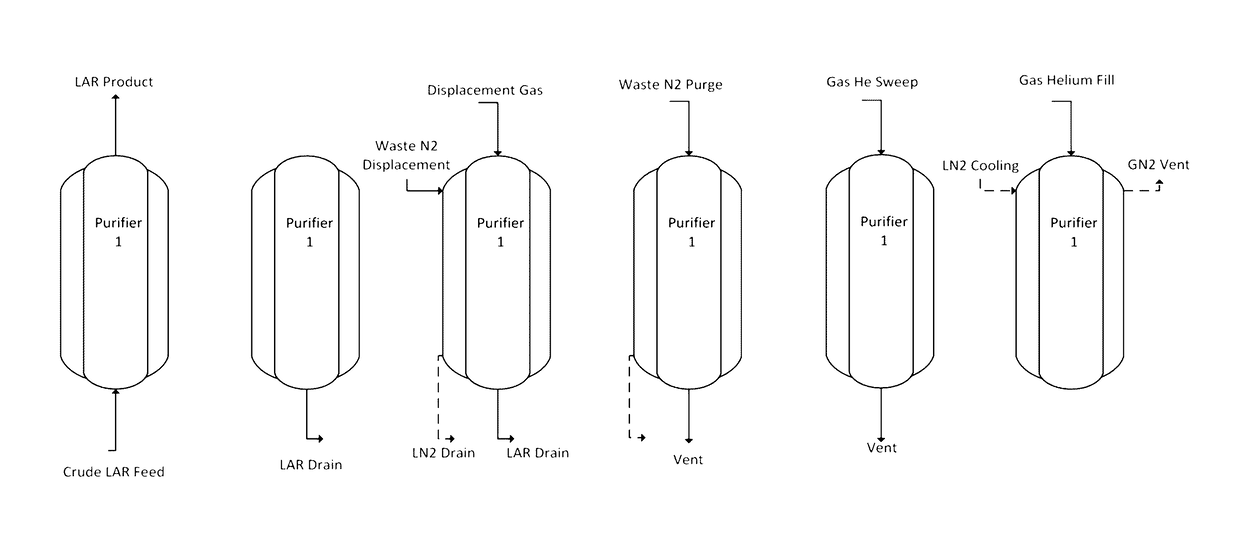Helium enhanced heat transfer in adsorptive liquid or gas phase argon purification processes
a technology of argon purification and helium ion, which is applied in the direction of separation processes, liquefaction, lighting and heating apparatus, etc., can solve the problems of product not meeting purity requirements, large amount of adsorbent needed, and high energy consumption, so as to reduce the time-consuming regeneration steps of tsa process, improve heat transfer, and improve the effect of heat conductivity
- Summary
- Abstract
- Description
- Claims
- Application Information
AI Technical Summary
Benefits of technology
Problems solved by technology
Method used
Image
Examples
example 1
[0105]As shown in FIG. 4, an experimental system was set up to measure the indirect cooling down temperatures vs. time at different conditions. A 5.3″ ID vessel packed with 4A zeolite adsorbent materials was embedded with thermocouples at three different locations (top, middle and bottom) as illustrated in FIG. 4. Those thermocouples were positioned in the center of each location. A pressure transducer was placed inside the adsorbent vessel to measure the pressure changes during the adsorbent indirect cooling process. For comparison, the temperature decrease with time during the indirect cooling process from ambient temperature to around 100 Kelvin was measured and recorded under both vacuum environment and helium environment. The measured temperatures (center of the adsorbent vessel T2 vs. time results were recoded and reproduced in FIG. 5. The results indicated that for a 5.3 inches ID adsorbent vessel, cooling down the adsorbent from ambient to about 100 Kelvin under vacuum condi...
PUM
| Property | Measurement | Unit |
|---|---|---|
| temperature | aaaaa | aaaaa |
| thermal conductivity | aaaaa | aaaaa |
| pressure | aaaaa | aaaaa |
Abstract
Description
Claims
Application Information
 Login to View More
Login to View More - R&D
- Intellectual Property
- Life Sciences
- Materials
- Tech Scout
- Unparalleled Data Quality
- Higher Quality Content
- 60% Fewer Hallucinations
Browse by: Latest US Patents, China's latest patents, Technical Efficacy Thesaurus, Application Domain, Technology Topic, Popular Technical Reports.
© 2025 PatSnap. All rights reserved.Legal|Privacy policy|Modern Slavery Act Transparency Statement|Sitemap|About US| Contact US: help@patsnap.com



